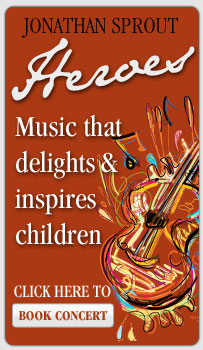The show was a sell out. The walls of the theater were lined with people who couldn’t get a seat. Many people were turned away at the door.
Dean Pitchford, songwriter of “Fame” and screenwriter of the movie Footloose (1984), was up for a GRAMMY in the children’s spoken word category. I had a fun conversation with Dean up in the green room, and then it was time for him to head down to the theater to kick off the concert with a reading from one of his books. Eventually, we went on and performed our two songs to an enthusiastic, intelligent and appreciate crowd of mostly music industry grown-ups and their families.
Some facts to put this GRAMMY experience into perspective: In 2008, there were over 105,000 albums released. At the 2010 GRAMMYs, there were 1,004 nominees from approximately 110 different categories. Nominees are determined by members of the Recording Academy who vote. You can join if you’re a professional who has worked for a while in the field of recorded music. Normally, five nominees are chosen per category. In my category, there were six, which means there was a tie in the voting. The GRAMMY winner is determined by the same voters in a second round of voting.
Many GRAMMY experts claim the highlight of the weekend is the Saturday GRAMMY Nominee reception. It was held after the lifetime achievement awards ceremony at the Wilshire Ebell near Hollywood. The place is an extraordinary mansion with courtyards, gardens, a ballroom, and, in our case, a red carpet. It has hosted performances and events since the 1920s. Judy Garland was discovered here in the 1930s. Amelia Earhart made her last public appearance here before disappearing on her around-the-world attempt in 1937.
We rushed from our concert to our Hotel room, donned our spiffy outfits and were driven to The Wilshire Ebell. We walked the red carpet to the theater and saw Leonard Cohen (“Suzanne”) and others receive lifetime achievement awards (including Michael Jackson’s manager on behalf of Michael), took some pictures, and then attended the reception. Stars were everywhere. We chatted with numerous nominees and spotted Jimmy Jam, Weird Al Yankovic, and New Age gurus Kitaro and David Darling.
And there was buffet shrimp, king crab legs, lamb, etc., to die for… Everywhere… all evening.
Every nominee gets a beautiful Tiffany GRAMMY medallion. It looks like an Olympic bronze medal, complete with a purple ribbon. You wait in a long line to receive your medal. We stood behind the writer of the most radio-played Christian music song of the year and in front of members of the GRAMMY nominated legendary group Hiroshima. When you get to the check-in spot, you sign your name in a book with a list of nominees before receiving your medal and having an official GRAMMY photo taken of you. The sign in book lists names alphabetically. The name just above mine was “Bruce Springsteen.” Above Bruce was “Brittney Spears.”
Security on Sunday, Grammy Day, was so tight that our taxi driver couldn’t get within two blocks of the arena without the pass we were given to give him. We waited in line to go through airport-type security at around noon in the warm California sun.
Ninety-nine GRAMMYs were given out between 1:00 and 3:00 PM Sunday afternoon in the Convention Center adjacent to The Staples Arena. I sat with my band cohorts a few rows from fellow children’s music nominees Greg & Steve and Cathy & Marcy and their entourages. The children’s music GRAMMY was given out in the #15 spot. Ziggy Marley, the winner, was not present to receive it.
Then it was through tunnels of white tenting over red carpets into The Staples Arena to our special GRAMMY Nominee seats. In the seat behind ours was the attorney for the Zak Brown Band which performed that night and won the GRAMMY for Best New Artist.


